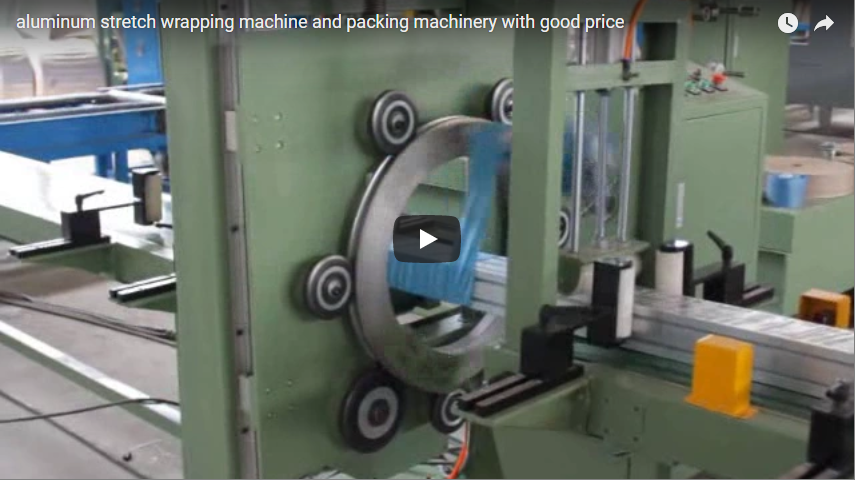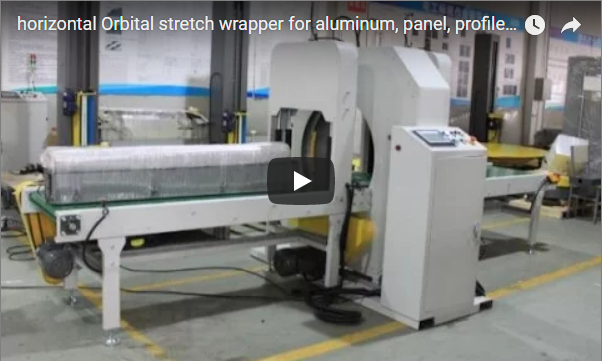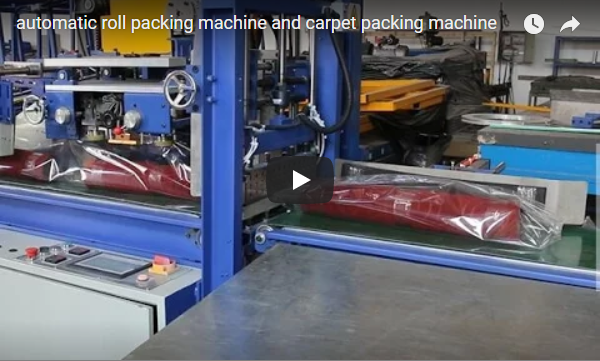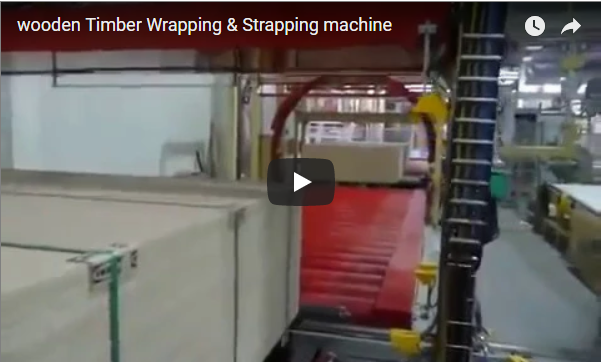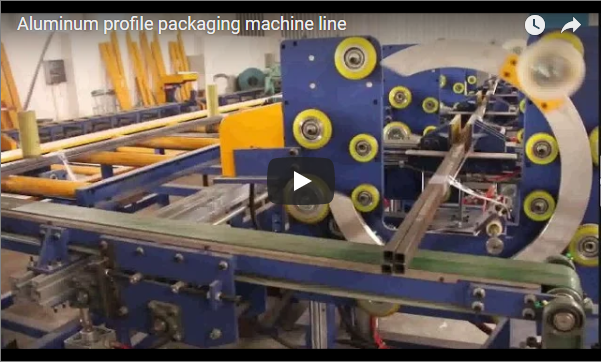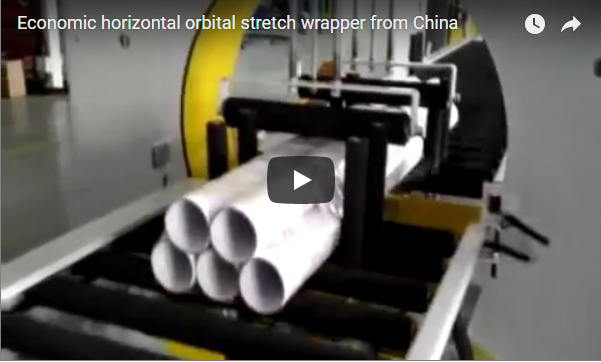A Technical Guide to Orbital Wrapping Machines for Industrial Packaging
Orbital wrapping machines, also known as horizontal stretch wrappers, represent a specialized category of packaging equipment designed primarily for securing long, bulky, or awkwardly shaped items using stretch film. These machines are crucial in industries dealing with products like pipes, lumber, extrusions, textiles, doors, and bundled materials, ensuring load stability, protection from environmental factors, and unitization for easier handling and transport. The following video demonstrates a typical orbital wrapping process in action:
1. Operating Principle of Orbital Wrappers
The core concept involves the product moving horizontally through a rotating ring. Mounted on this ring is a stretch film carriage. As the product advances through the ring's aperture, the ring revolves around it, dispensing and applying stretch film circumferentially. This creates a tight, continuous wrap along the length of the product or at specific points as needed. Conveyors (infeed and outfeed) manage the movement of the product through the wrapping zone.
2. Key Components and Features
Understanding the main parts of an orbital wrapper helps in appreciating its functionality:
- Rotating Ring: The central component that orbits the product. Ring speed is often adjustable to control the wrap overlap. Available in various diameters to accommodate different product cross-sections.
- Film Carriage System: Holds the roll of stretch film. Modern systems often feature pre-stretch capabilities (stretching the film before application), which optimizes film usage and improves load containment force. Tension control ensures the film is applied correctly without damaging the product.
- Conveyor System: Typically belt or roller conveyors that automatically feed the product into, through, and out of the wrapping ring. Conveyor speed is usually adjustable and synchronized with the ring speed.
- Clamping and Cutting Unit: Automated systems include devices to clamp the leading edge of the film at the start of the cycle and cut the film tail at the end, improving efficiency and safety.
- Control System (PLC): The brain of the machine, allowing operators to set parameters like ring speed, conveyor speed, number of wraps, film tension, and wrap patterns (e.g., full wrap, banded wrap). Touchscreen interfaces (HMI) are common for ease of use.
- Safety Features: Includes guarding around moving parts, emergency stop buttons, and potentially light curtains or safety interlocks to protect operators.
3. Typical Technical Specifications (Varies by Model)
While exact specifications depend heavily on the machine model and manufacturer, typical ranges include:
- Product Dimensions:
- Max Length: Often virtually unlimited (determined by conveyor setup) or defined (e.g., 6m, 12m).
- Max Cross-Section (Width x Height): Ranges from small profiles (e.g., 300x300mm) to large bundles (e.g., 1500x1500mm or more).
- Ring Speed: Adjustable, typically ranging from 20 to 150 RPM or higher, depending on ring size and application.
- Conveyor Speed: Adjustable, often from 5 to 30 m/min, synchronized with ring rotation for desired wrap overlap.
- Stretch Film:
- Type: Standard LLDPE stretch film.
- Width: Commonly 125mm, 250mm, or 500mm (5", 10", 20").
- Thickness: Typically 17-35 microns.
- Pre-Stretch Ratio: Often adjustable up to 250% or 300% on powered systems.
- Power Requirements: Varies based on machine size and features (e.g., 220V/380V/480V, 3-phase).
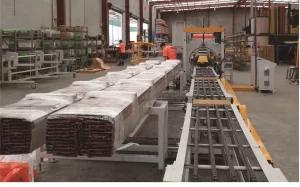
horizontal orbital stretch wrapper56 jpg 4. Common Industrial Applications
Orbital wrappers find use across numerous sectors:
- Metals Industry: Wrapping pipes, tubes, bars, coils, aluminium profiles, structural steel.
- Wood and Lumber: Securing bundles of timber, planks, mouldings, flooring.
- Plastics: Packaging plastic pipes, profiles, window frames.
- Building Materials: Wrapping doors, windows, insulation panels, bundled siding.
- Textiles: Securing rolls of fabric, carpet, non-wovens.
- Furniture: Protecting long components or assembled flat-pack furniture.
5. Benefits of Implementing Orbital Wrapping Technology
Compared to manual wrapping or other methods, orbital wrappers offer distinct advantages:
- Improved Efficiency: Significantly faster than manual wrapping, increasing throughput.
- Consistent Wrap Quality: Ensures uniform tension and overlap, leading to stable and well-protected loads every time.
- Reduced Labor Costs: Automation minimizes the need for manual labor in the wrapping process.
- Material Savings: Pre-stretch systems can significantly reduce film consumption compared to manual application.
- Enhanced Product Protection: Provides a tight, secure wrap protecting against dust, moisture, scratches, and shifting during transit.
- Improved Safety: Reduces risks associated with manual wrapping, such as repetitive strain injuries.
- Professional Presentation: Creates a neat, professional-looking package.
6. Operational Considerations
Effective use involves several factors:
- Setup: Proper loading of the correct film type, setting appropriate tension, ring speed, and conveyor speed based on the product.
- Operation: Monitoring the process, ensuring smooth product flow, and managing starts/stops.
- Maintenance: Regular cleaning, lubrication of moving parts (ring, conveyors), inspection of wear items (cutting blades, rollers), and checking safety systems. Adhering to the manufacturer's maintenance schedule is crucial for longevity and reliability.
- Troubleshooting: Understanding common issues like film breaks, uneven wrapping, or machine faults and how to address them based on the machine's manual and diagnostics.
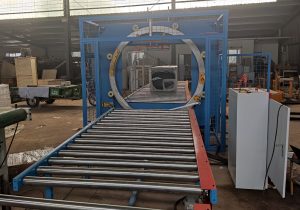
7. Selecting the Right Orbital Wrapping Machine
Choosing the appropriate machine depends on several factors:
- Product Characteristics: Dimensions (length, cross-section), weight, and fragility.
- Throughput Requirements: Number of products to be wrapped per hour or shift.
- Level of Automation: Manual, semi-automatic, or fully automatic lines integrated with other processes.
- Wrapping Needs: Full wrap, banding only, specific overlap requirements.
- Budget: Initial investment cost versus long-term operational savings.
- Space Availability: Footprint of the machine and required infeed/outfeed areas.
- Film Efficiency: Importance of pre-stretch capabilities for cost savings.
Conclusion
Orbital wrapping machines provide a robust and efficient solution for packaging long or irregular items across various industries. By automating the stretch wrapping process, they deliver consistency, speed, material savings, and enhanced product protection, contributing significantly to streamlined logistics and reduced operational costs. Understanding the technology, its applications, and the key considerations for selection allows businesses to leverage orbital wrappers effectively for their specific packaging challenges.
For more details on types of horizontal wrapping machines:
https://www.fhopepack.com/Horizontal_wrapping_machine.html
For technical inquiries or specific application questions:
info@fhopepack.com

